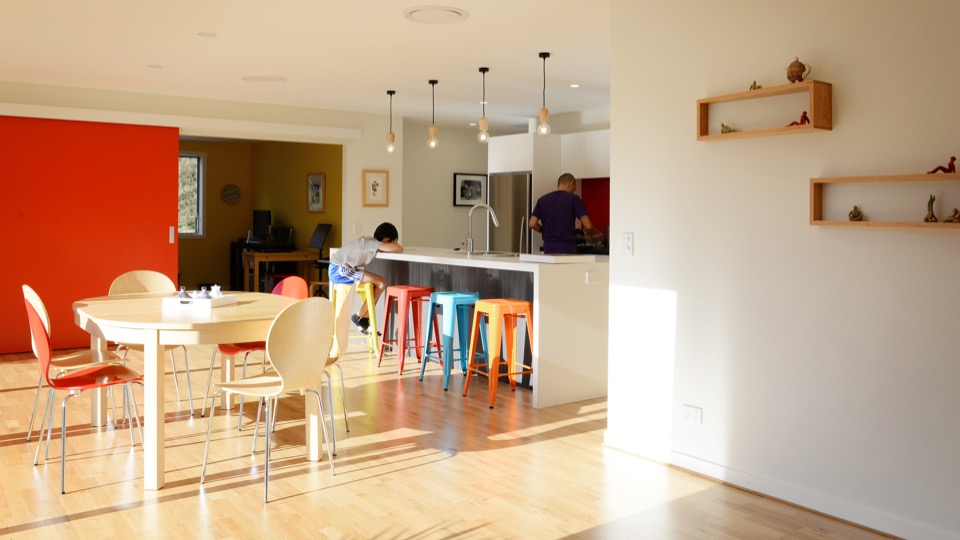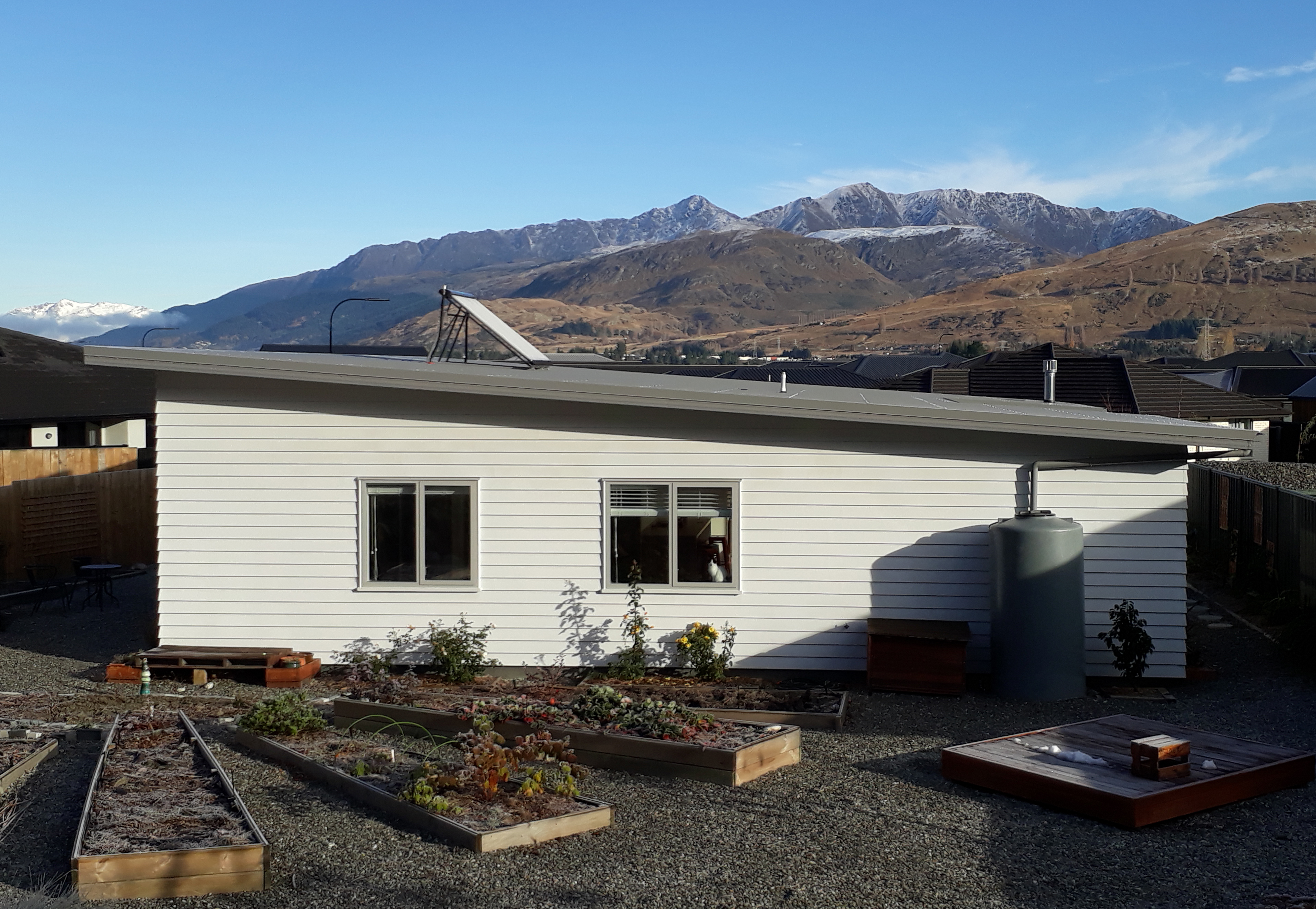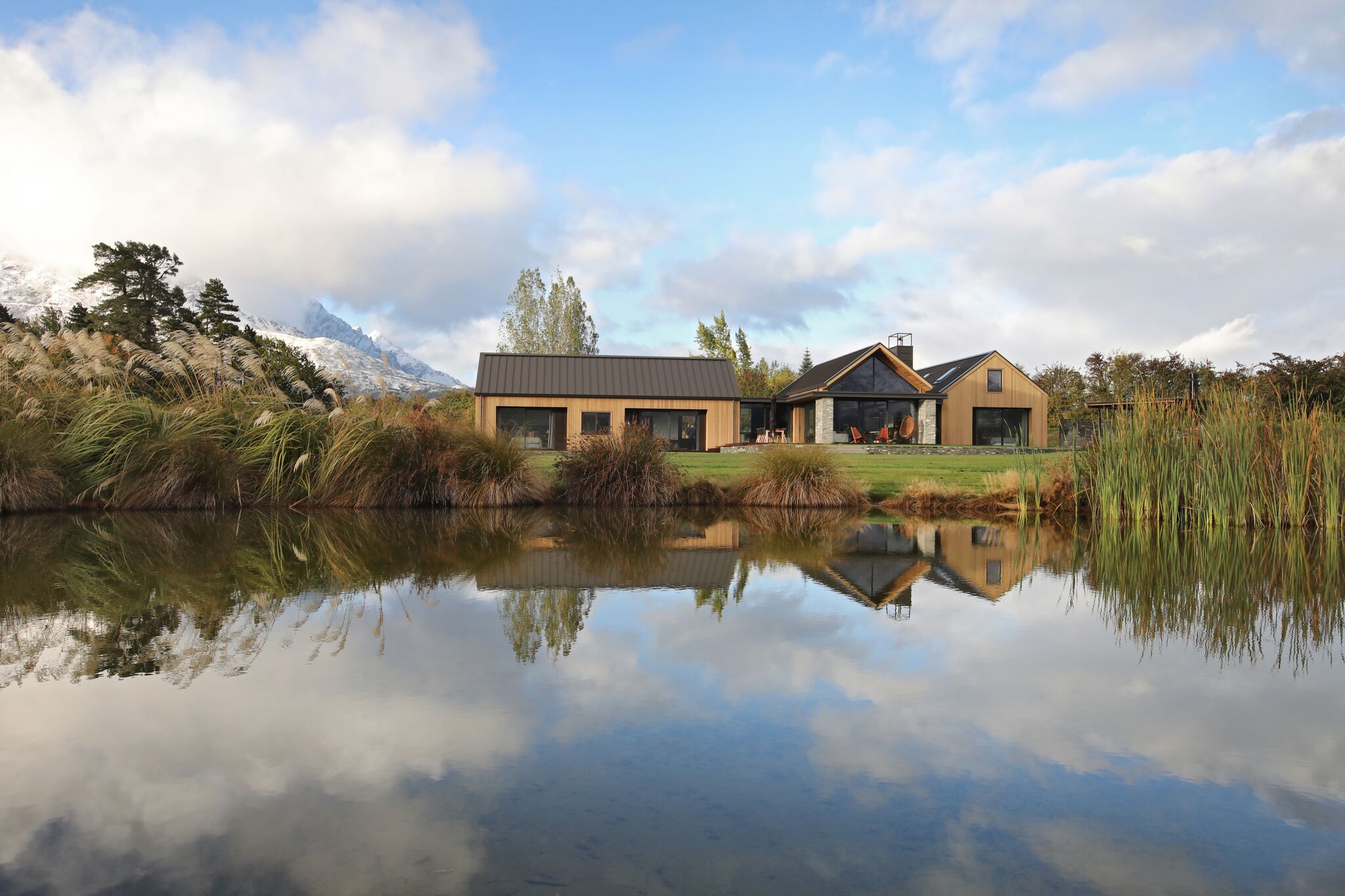Podcast: Play in new window | Download | Embed

In episode 145 I spoke with Dennis Dowling of DCD (Dowling Construction & Development). In episode 177, I talk with Annabelle Numaguchi who has a PR and marketing background and is now part of the DCD team. Annabelle has assessed a spectrum of homes, from 6-9 Homestar, thus far. Why did Annabelle become a Homestar Assessor and what is her vision for DCD? Find out in this episode of Home Style Green.
Podcast correction: In the introduction, I mistakenly say that DCD is based in Christchurch. Dennis, Annabelle and the DCD are actually based in Queenstown.
Surprisingly Cold
Annabelle Numaguchi and her husband spent 10 years living in Utah before moving to New Zealand. Utah has pretty extreme weather. It can be very hot and it can also get freezing cold. So by the time they arrived in Queenstown, Annabelle was used to the cold, but she was not used to being cold indoors.
This is an all-too-familiar story. It tends to be those who have experienced warm, comfortable homes elsewhere in the world, who are the first to rightly reject the New Zealand status quo.
Annabelle says she really wanted a home that was going to perform and that was why she ended up building rather than buying an existing New Zealand house.
Reinventing the House
The ‘number 8 wire’ mentality of innovation has a place in New Zealand. Some say it’s a fundamental component of the kiwi culture. But blind innovation for the sake of innovation isn’t smart.
In the building and construction sector, we should learn and leverage from the mistakes and experiences made by others around the world. The first step is to acknowledge that we’re actually behind. People like Annabelle who have lived more comfortably in harsher climates are helpful when they remind us that we need to catch up.
Annabelle is enthusiastic about the opportunity for us to use innovation to leap ahead.
Learn from Others
In the same way that New Zealand doesn’t need to innovate as much as we think, individuals can learn from the experience of others, locally. Collaboration and knowledge sharing is common to Homestar, Passive House, Superhome and more. It’s easy to get involved. Search for a meet up or event in your local area.
Performance on a Budget
Starting with her own home, Annabelle had one key question. “How can we build the highest performing home while sticking to our budget?”
The first and most important way to achieve a good home on a fixed budget is to minimise the footprint, says Annabelle. Don’t make the house too big. It’s important in the early stages to be confident with your own needs and wants, and not be swayed by real estate marketing.
Next, comes good design. Smart, sensible design has allowed Annabelle, her husband and two teenage children to enjoy a three bedroom, two lounge room home with a modest floor area of 176 m². The living space is flexible thanks to a study nook. The second lounge can also be transformed into a spare bedroom when guests arrive.

House Size Creep
Annabelle says that, “In New Zealand and in the United States, we’ve had house-size creep”. She adds, “At the end of the day, most people will value quality over quantity”.
Despite what the real estate agent says, most people don’t actually need that fourth bedroom.
Homestar® v4
Annabelle believes in Homestar as a practical sustainability tool. As I’ve discussed previously on Home Style Green, Homestar is broad and covers a lot more than just energy.
Homestar v4 (released in 2017) goes from 6 to 10 stars. Unlike previous versions which started at 1 star. No one really liked getting a 1 star. No one even really liked getting 4 or 5 stars, as this was pretty much equivalent to the New Zealand Building Code.
Version 4 adds also adds some flexibility. From a total of 120 possible points, 100 points are required to achieve World-leading 10 Homestar status.
Passive House and Homestar
Passive House compliments Homestar because Passive House is quantitative building science. Under Version 4 of Homestar, a Passive House will start you off with an 8 Homestar rating, says Annabelle. Then it’s not much more to add some water efficiency and sustainable materials into the mix for an even higher Homestar rating.
Invisible Difference
Most of what makes a home perform well, is invisible. It’s the insulation in the walls, the quality of seals in the joinery and how airtight the building is. It’s pretty hard to market a house by talking about the insulation and membranes inside the walls. Fibreglass is just not as sexy as granite. How can energy efficiency compete with school zone, views and kitchen benchtops?
Annabelle sees tools like Homestar as being part of the solution to help communicate comfort and energy efficiency. It should be like a rating sticker on an appliance, Annabelle explains. Sure, you’re going to look at the aesthetics, size and the features of a fridge in the store first, but all other things being equal, consumers should find ratings helpful for their final buying decision.

Get the Fundamentals Right
It’s totally impractical to retrofit insulation to a floor slab, and you’re not likely to swap out your windows for higher performance ones after living in a new house for a few years.
They’re not sexy. You can’t take glossy real estate photos of them. But insulation, ventilation and airtightness provide the true value of home performance. Invest in these priorities as much as you can.
Advocates for Home Performance
Both Annabelle and Dennis Dowling at DCD are big advocates for spreading the word about how homes can, and should perform. It’s valuable for our industry to have people like Annabelle with PR and marketing skills, helping to increase the demand for healthy, comfortable and effective homes.
DCD
DCD builds high-end thermally efficient homes. Annabelle wants to help Dennis and his team grow to become the ‘go-to’ builders for aspirational projects in New Zealand. They also want to contribute to overall market transformation. The company is based in beautiful Queenstown but their advisory and Homestar assessment services are available nationwide.
Connect
Connect with DCD and sustainable building communities to keep up to date.

Leave a Reply